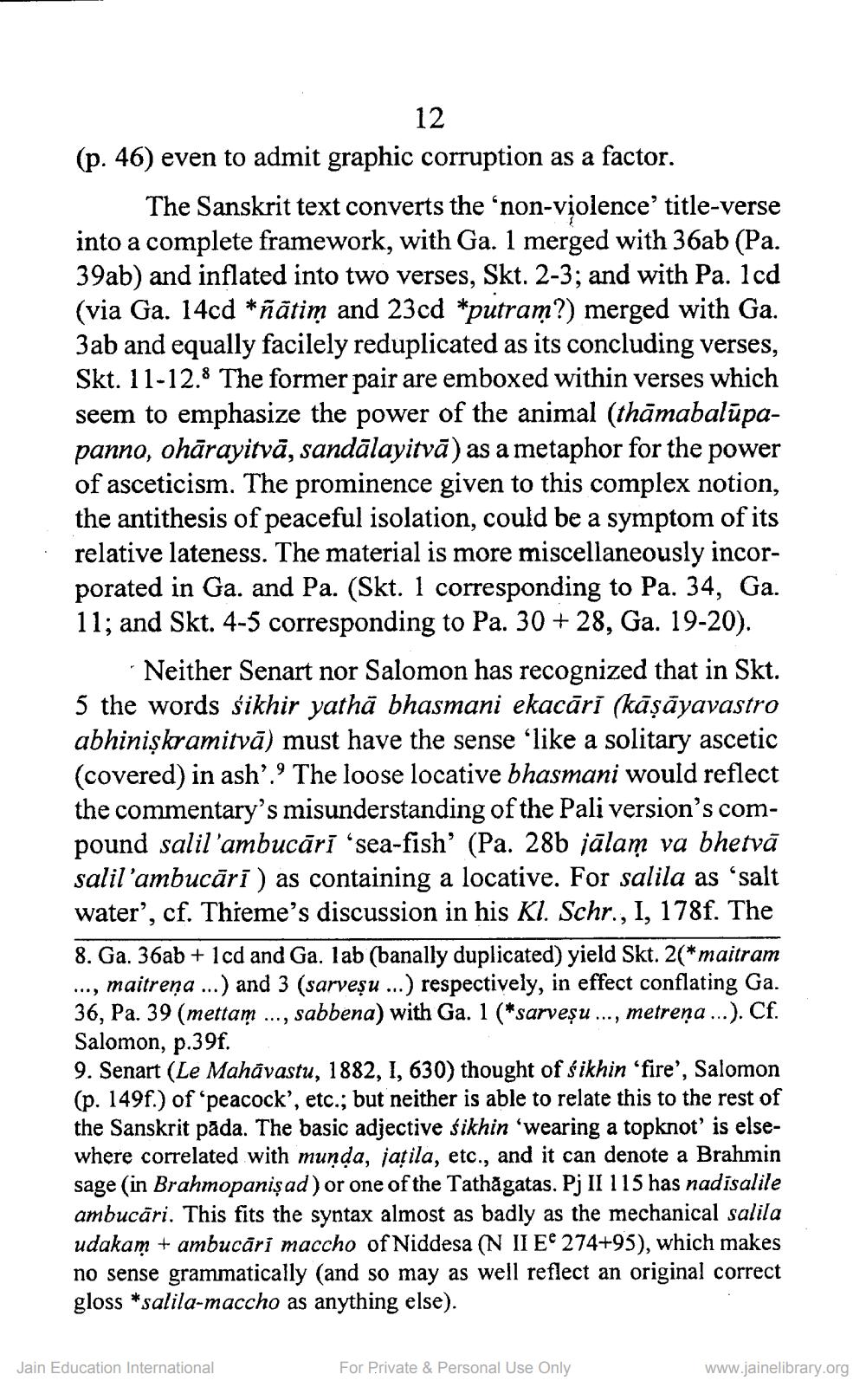________________
(p. 46) even to admit graphic corruption as a factor.
The Sanskrit text converts the 'non-violence' title-verse into a complete framework, with Ga. 1 merged with 36ab (Pa. 39ab) and inflated into two verses, Skt. 2-3; and with Pa. 1cd (via Ga. 14cd *ñātim and 23cd *putram?) merged with Ga. 3ab and equally facilely reduplicated as its concluding verses, Skt. 11-12. The former pair are emboxed within verses which seem to emphasize the power of the animal (thāmabalūpapanno, ohārayitvā, sandālayitvā) as a metaphor for the power of asceticism. The prominence given to this complex notion, the antithesis of peaceful isolation, could be a symptom of its relative lateness. The material is more miscellaneously incorporated in Ga. and Pa. (Skt. 1 corresponding to Pa. 34, Ga. 11; and Skt. 4-5 corresponding to Pa. 30 + 28, Ga. 19-20).
12
Neither Senart nor Salomon has recognized that in Skt. 5 the words sikhir yathā bhasmani ekacārī (kāṣāyavastro abhiniṣkramitvā) must have the sense 'like a solitary ascetic (covered) in ash'.' The loose locative bhasmani would reflect the commentary's misunderstanding of the Pali version's compound salil'ambucārī 'sea-fish' (Pa. 28b jālam va bhetvā salil'ambucārī) as containing a locative. For salila as 'salt water', cf. Thieme's discussion in his Kl. Schr., I, 178f. The 8. Ga. 36ab1cd and Ga. lab (banally duplicated) yield Skt. 2(*maitram maitreṇa...) and 3 (sarveșu ...) respectively, in effect conflating Ga. 36, Pa. 39 (mettam sabbena) with Ga. 1 (*sarveșu ...,
****
metreṇa...). Cf.
Salomon, p.39f.
9. Senart (Le Mahāvastu, 1882, I, 630) thought of sikhin 'fire', Salomon (p. 149f.) of 'peacock', etc.; but neither is able to relate this to the rest of the Sanskrit pāda. The basic adjective sikhin 'wearing a topknot' is elsewhere correlated with munda, jațila, etc., and it can denote a Brahmin sage (in Brahmopanisad) or one of the Tathāgatas. Pj II 115 has nadisalile ambucări. This fits the syntax almost as badly as the mechanical salila udakam + ambucări maccho of Niddesa (N II E 274+95), which makes no sense grammatically (and so may as well reflect an original correct gloss *salila-maccho as anything else).
Jain Education International
...
For Private & Personal Use Only
www.jainelibrary.org




